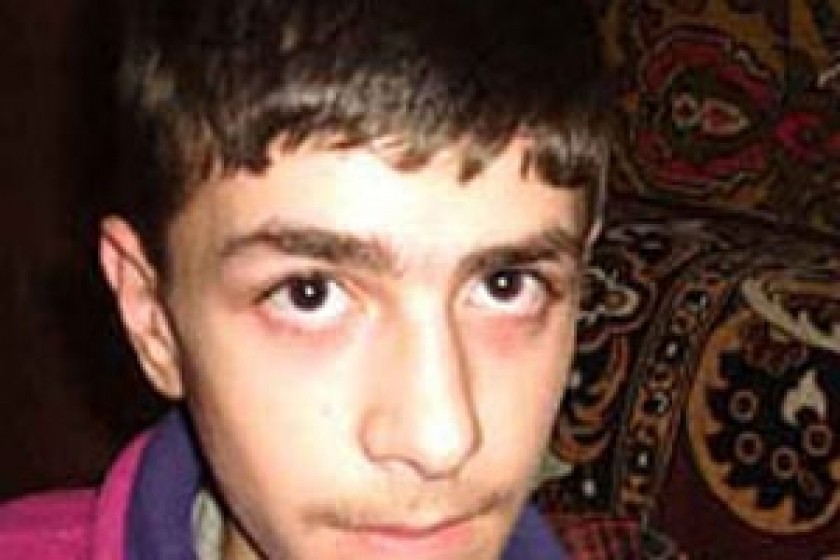
The world through a window
Mayis only had the chance to go to school for two years - first and second grade. It got harder and harder for his mother to take him and her other disabled son to school, and finally she took them out
"The principal saw me carrying the boys to school and told me: 'It's too hard for you; take the children home and get a teacher to come to you,'" Teresa Mnatsakanyan recalls.
The doctors say 14-year-old Mayis and 12-year-old Arthur suffer from a hereditary muscular disease, but they haven't proposed any treatment. Mayis has not been able to walk for four years and Arthur for three. They can only go out of the house in wheelchairs. The boys' legs no longer obey, and their arms are getting weaker by the day. Their parents decided to take the boys out of school five years ago, after Arthur fell and injured his head. Since then, a teacher has come to work with Mayis and Arthur at home twice a week; their only experience of school life comes from the stories their former classmates tell them when they visit, and from the cultural events organized at the school a couple of times a year.
"I teach them whatever is appropriate. I am guided by their potential and capabilities," says Susanna Sargisyan, a teacher at Vanadzor's Special School #1.
During the first years of home schooling, Mayis studied only Armenian and math, but the number of subjects has increased over the years. He has trouble with math; it was even hard to count to ten in the beginning. Russian is his favorite subject. "I only learned half of the letters because the Russian teacher couldn't come. But now I can even write," Mayis says. He learned by watching Russian TV programs.
Their teacher says that it is impossible to adhere completely to the school program. Instead the children are taught what is comprehensible and easy for them to learn. For Mayis, oral communication is easier; his hand gets tired if he writes for a long time.
The brothers have adapted to being schooled at home. "We are trying to keep in contact with the school, we take them to school in their wheelchairs, and their schoolmates visit them. But in their condition, they can't go to school," Sargisyan says sadly.
"I wish I could get up every morning and go to school and come back home," Mayis confesses.
The 14-year-old spends a considerable part of the day in front of the TV set. But most of all, he loves drawing. His talent for drawing has been apparent since he was a small child. "My friends are surprised that they can't draw so well," Mayis says. His friends are named Gnel and Tigran; they live nearby, and often come over to visit. The boys talk about different things, but mostly they like to play.
Their mother says that if the boys went to school she would have to spend all day there with them. They can't sit in their wheelchairs for a long time; they have to rest. But they dream of school, because they need to associate with their peers. NGOs that work with the disabled strive to make up for the lack of contact. For the last four years, the boys have attended the community center for children with special needs run by the Armenian People's Forum. "I go there and draw with other children. We have good time there. They even took us to a café, and to the theater," Arthur, usually much quieter than his brother, tells us.
A group of disabled children of the same age from socially insecure families has taken shape at the center. They take part in the activities that are organized there, and get help with their homework. Parents are aided in establishing a healthy family atmosphere. "We partly make up for the lack of school. Of course, we cannot give them everything a school does," the center's psychologist, Eliza Antonyan, says. As she explains it, the center gives the children an opportunity to make up for the lack of contacts with their peers, and home schooling gives them an opportunity to develop their intellectual faculties.
"The negative thing is that the children are not able to associate with others and are far from integrating into their environment," says Nune Pepanyan, the chairman of the NGO Lusastgh. "Contact plays a major role in shaping children's character, and testing their knowledge." Pepanyan does not believe that today's schools are prepared to accept disabled children. First of all, they are not adapted technically; there are no ramps, no bathrooms that children in wheelchairs can use. "And finally," she adds, no school is psychologically ready to see a disabled child in its ranks, no matter how much society speaks about integration."
"There are people who make fun of my children, and call them names. There are kids in the yard who look at my children differently. True, there are also kids who are ready to help the brothers, to push the wheelchairs if they have to," says the mother of Mayis and Arthur.
"I want to go to art school, to have good instructors, and to become an artist," Mayis dreams out loud, as he keeps track of what's going on in the world by watching TV, and looking through their living room window.
 Videos
Videos Photos
Photos
Write a comment